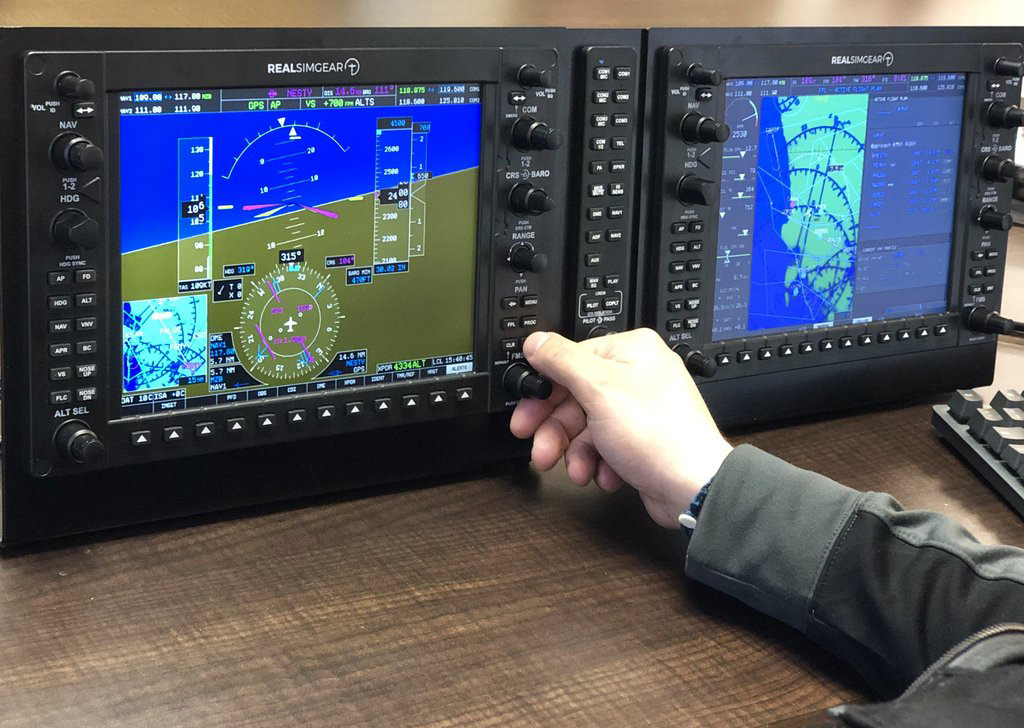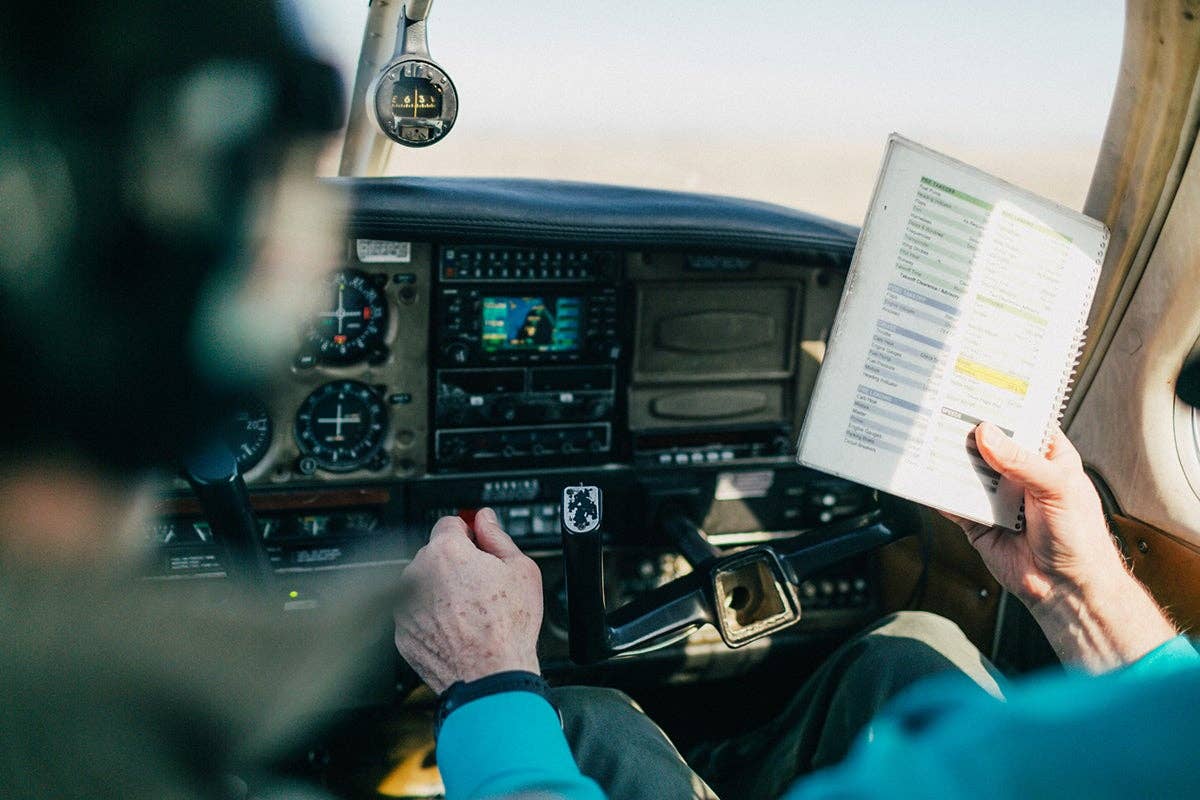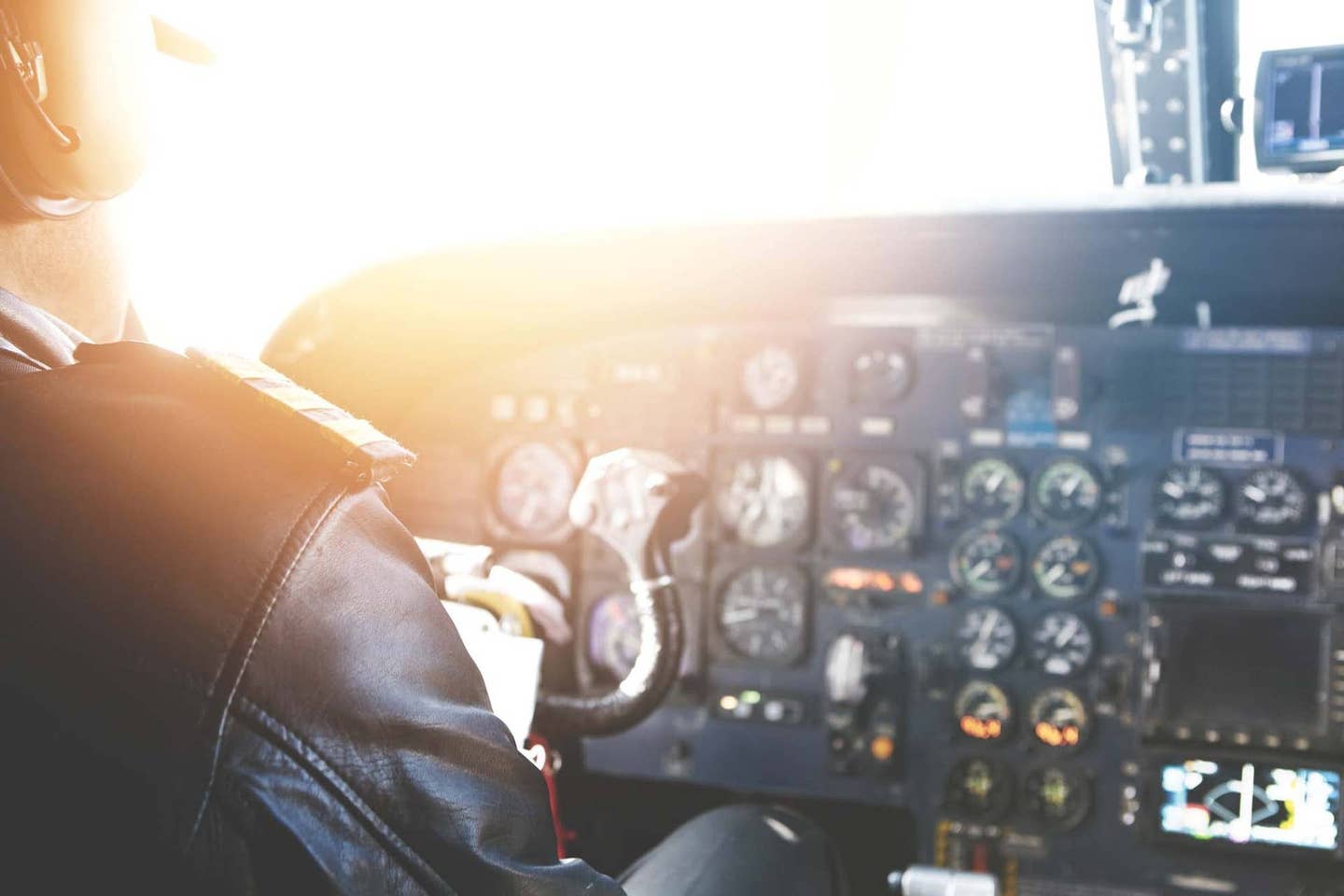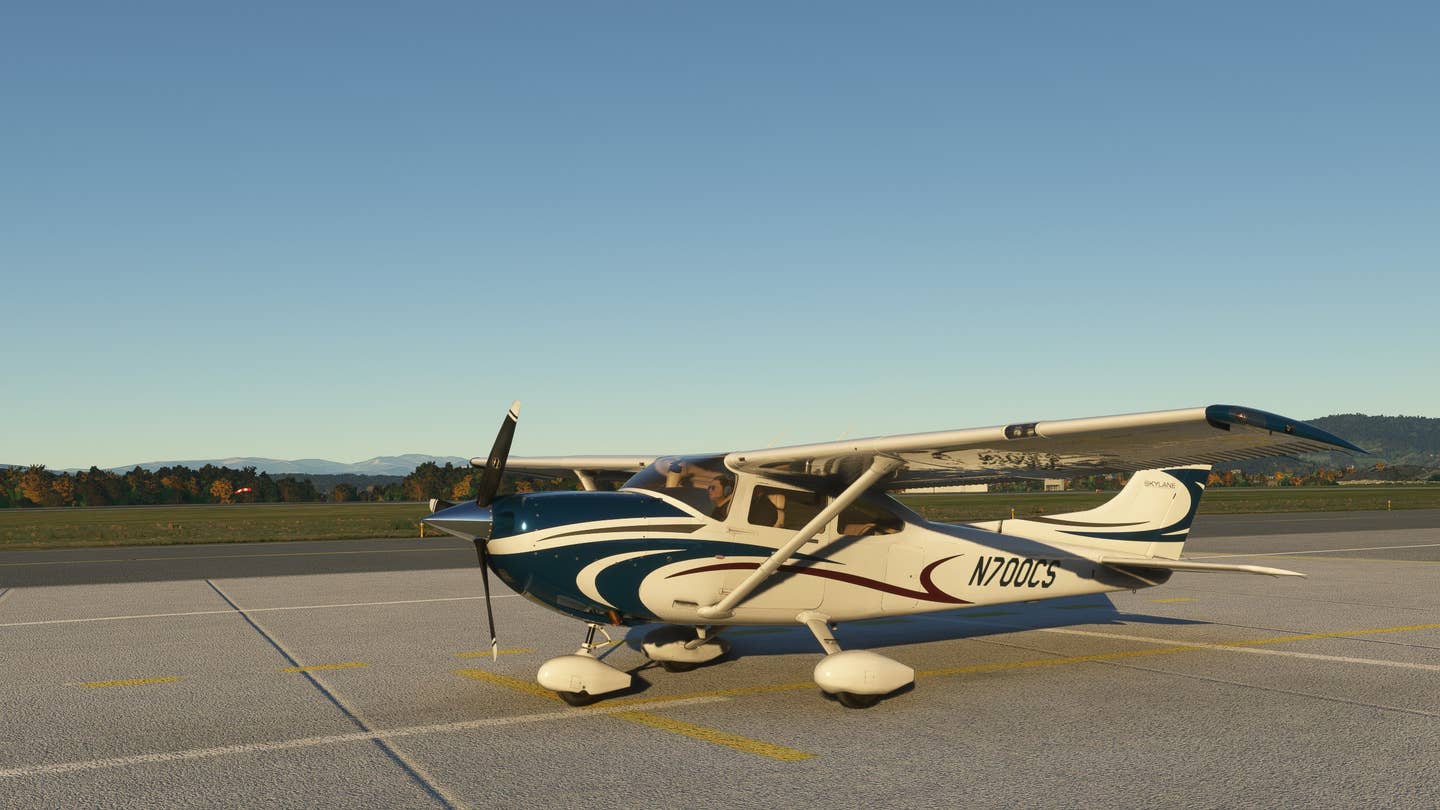
Accidents during cruise are almost unheard of in turbine airplanes where the risk is concentrated in the departure and arrival phases of flight. General aviation pilots also come to grief most frequently in the airport vicinity, but an alarming number of accidents happen during cruise, which should be a benign part of any trip.
Most serious accidents in cruise involve bad weather. The less serious events usually are caused by a loss of power, typically because there is no fuel on board, or the fuel that is there isn't reaching the engine. And there are several accidents every year that remain total mysteries. In these cases the pilot is usually flying VFR, not in contact with controllers, and the wreckage is found sometime later after a search is launched when the airplane is reported missing. That type of crash leaves very few clues to determine a probable cause.
Twenty to 30 years ago the so-called continued VFR accident was among the most common type of serious crash. The non-instrument rated pilot would plunge ahead into deteriorating weather conditions and be forced to fly lower and lower to stay out of the clouds until he flew into something he could no longer see.
The FAA and general aviation industry believed that expanding the number of instrument rated pilots would solve the continued VFR accident problem. Now well over half of all pilots are IFR rated. The total experience required to earn the rating was reduced and pilots are encouraged to add the IFR rating as soon as possible after earning the private license. Years ago it was the reverse when most would advance to a commercial certificate before tackling instrument training.
Well, the plan worked, but not in a way anyone intended. Now accidents that occur when IFR pilots are flying in instrument meteorological conditions (IMC) outnumber the classic continued VFR accident. And the results of a loss of control in the clouds are almost always fatal while the scud-running VFR pilot does have a chance to put it down somewhere before losing all contact with the ground.
Avoiding a continued VFR accident is the easiest thing in the world because you have a continuous real-time weather report right in front of you. It's the windshield. No matter what the forecast says, no matter what weather stations are reporting, the only weather report that matters to a VFR pilot is what you see out the windshield.
When pilots used to routinely fly long trips VFR the experienced among them developed rules for when to call it quits. For example, over flat lands if you never cruise below 1,000 feet your chances of survival are good. Obstacles such as antennas are still a problem, but they are well charted and if you land before visibility drops you will be able to see and avoid obstacles.
Over lumpy terrain the smart pilot won't continue if he can't see at least the next two, or better three, ridge lines ahead. If visibility drops to the point that you can only see the next ridge to cross, you have no way of knowing if the hill behind that is hidden in the clouds. But when you can see multiple ridges you know you can continue, and better still, know that there is enough visibility to turn around when you can see the ridges ahead.
Of course scud running in the high mountains of the west is just plain suicide. The terrain is often so steep, and the valleys so deep, that there is no escape and no way to see beyond the peaks.
But flying IFR in IMC is different. You shouldn't need to see the ground or a horizon to control the airplane, but there are clouds that can make it very demanding to maintain control of a general aviation airplane. Thunderstorms and ice are the two big worries for every IFR pilot, but there are turbulent clouds that can toss piston singles and twins around without being convective.
I am lucky enough to get to fly both jets and piston airplanes, and in a bumpy cloud it is much easier to control a jet with its higher wing loading. Turbulence that makes the piston airplane wallow and roll is usually converted into short, sharp jolts by the speed and high wing loading of the jet. The rapidly rising air of a mountain wave or unstable cloud can push the light airplane up, and then down, for long periods while the pilot has to fly unnatural pitch attitudes to maintain assigned altitude. But those phenomenon are barely noticeable in a jet.
Nobody knows for sure how big a part turbulence plays in the loss of control by IFR pilots, but I suspect it is large. Flying IFR in smooth stratus clouds is easy because the airplane deviates little from straight and level. But in big bumps flying IFR in a light airplane you must perform an almost continuous upset recovery maneuver because the airplane can easily be displaced by many degrees of pitch and roll before you can move the controls to correct back.
The best way to maintain control in IMC in cruise is to have an autopilot and use it. No matter how bumpy it gets the autopilot is making corrections instantly. It takes time for the airplane to respond to the control inputs, but the autopilot doesn't become disoriented. For some reason many general aviation pilots don't rely on their autopilots enough and even turn them off when they are most useful, such as in a bumpy cloud or on a low approach. That's just backwards. Turning the autopilot off in bad weather conditions would be like kicking the copilot out of a jet when things got bad. You want all of the help you can get.
The old advice on autopilot use in turbulence was to turn off the altitude hold function and let the airplane move up and down. That was probably a good technique except many modern autopilots hold a set pitch attitude no matter whether altitude hold mode is engaged or not. So, it doesn't matter whether the autopilot is holding a target pitch attitude, or an altitude, the result is the same in turbulence, so you may as well leave it in altitude hold mode. The autopilot will use some rather large pitch changes to hold altitude or attitude so you need to monitor airspeed and adjust power to keep the speed under control. It's vital to fully understand how your autopilot functions because there are wide differences from one system to another.
Of course, the autopilot systems in most general aviation airplanes are single string, meaning that there are several points where failure disables the whole system. For example, there is only one computer, and if it quits, the whole system goes down. There are only single servos to move the control surfaces in each axis. And so on. As good as autopilots are, the human remains the backup for them and needs to be ready to take over.
The most important part of maintaining control in turbulent clouds is to work hard at keeping the wings level. It is virtually impossible to lose control when the wings are level because the stability of the airplane keeps trying to bring the pitch attitude back to match the trimmed airspeed. If you don't believe me, try pushing or pulling on the controls with the wings level in VFR conditions. It will take a great deal of effort on the controls to make big changes in the airspeed in either direction. Now try the same thing in a steep bank and you will find that pulling hard without feeding in opposite aileron only steepens the bank and increases airspeed. In a steep bank any release of back pressure on the wheel will allow the nose to drop and increase airspeed. That's why loss of control in the clouds invariably leads to a spiral dive at very high speed, sometimes enough to break the airframe.
In addition to using the autopilot for IFR cruise it's also wise to have satellite weather capability in the cockpit. Unlike the VFR pilot who gets the instant weather report through the windshield, the IFR pilot needs help to know what kind of clouds are ahead. Avoiding thunderstorms and lightning are obvious benefits of satellite weather information, but airmets, sigmets and metars from airports ahead all help.
I have to admit that I didn't pay a whole lot of attention to airmets before I started flying with XM Weather, and now WSI/Avidyne, too. It was so hard to visualize the boundaries of an airmet for turbulence, for example, when you read or heard that it went from "30 nm northeast of ACY to 20 nm south of HUO and … " But now that I see the airmets outlined on the moving map, I pay attention. And the airmets for turbulence are much more accurate than I ever believed. You can fly through annoying bumps when there is no airmet issued, but it is rare to see an airmet for turbulence and not find bumps in that airspace.
It would be hard to travel far on many days without encountering an airmet for turbulence at the piston airplane altitudes, but to be informed is to be ready. If you are not confident in your instrument skills, or your autopilot is unreliable or not working, I would not fly in clouds within the boundaries of an airmet for turbulence. Of course a sigmet for turbulence should send all light airplanes in the other direction. Sigmets for turbulence are uncommon and predict conditions that are a safety threat to airplanes of all sizes and capabilities.
The other big threat to cruise flight safety -- loss of power -- is mostly, but not entirely, in our control. Though it is true that the majority of forced landings are caused by fuel problems, engines can and do occasionally break mechanically. The true sudden failure of an engine is quite rare and is often the result of a mistake when the engine was overhauled or maintained. Typically an engine will send out signals to the attentive pilot that it has a problem before a total loss of power occurs.
The best protection against mechanical engine failure is to abide by all maintenance instructions and fly frequently. Everything in an airplane lasts longer and operates better when it is used regularly, and that is particularly true of engines. An engine that sits can be attacked by corrosion and other forms of decay. The longer a period between flights the more time birds and even insects have to plug something up. And non-wearing items such as hoses and wires decay over time as an engine sits.
But the huge problem of fuel exhaustion can be solved by pilot discipline and the routine use of computerized flight planning systems. Flight planning discipline requires a pilot to be conservative in predicting fuel flow and in knowing the actual fuel load before takeoff.
In most piston airplanes the fuel gauges should be used as confirmation of fuel on board after you have determined the actual fuel level some other way. For example, looking in the cap and seeing the fuel level brimming is concrete evidence the tank is full and the gauge should agree. Another reliable means in many airplanes are fixed tabs visible in the tank that show a partial fuel level, and the gauge should agree. Another means is the meter on the fuel truck or pump. These are very accurate and you know you have at least that number of gallons on board and the gauges should agree.
I have heard many general aviation pilots over the years say that the fuel gauges in piston airplanes just aren't accurate and should be ignored. I don't agree. If the fuel gauge says full, or some substantial level, I won't believe it without independent confirmation before takeoff. But if the gauge shows empty, I will believe it and get to a runway. Who knows how many hapless pilots have run out of gas with gauges showing empty but they refused to believe what the gauge said because "it is unreliable."
The typical float-type fuel level sensor in a piston airplane is designed so that it shows empty if there is a failure. For example, if a wire frays, or the sensor itself fails, the gauge is designed to show empty even if there is plenty of fuel. The gauges are also usually calibrated with the tanks empty so that is their most accurate reading. There could, of course, be some type of failure that would cause a fuel gauge to show more fuel than is in the tank and that's why I always believe them when they say empty, but never believe them totally when they show full.
But you almost don't need fuel gauges if you know, as you should, the actual fuel on board at takeoff, and the fuel flow. Then it is just a matter of keeping track of the time and building in at least one hour of normal cruise power fuel flow for reserve. There are many excellent flight planning systems that will automatically consult the winds aloft forecast and calculate your flight time with near perfection for either an IFR or VFR flight. There are excellent free flight planning systems on FltPlan.com and either DUAT provider. I use FltPlan.com and find its precision almost spooky. I just flew my Baron to Oshkosh and back the following day and FltPlan.com pegged trip time within one minute both directions, even though going out took more than four hours, and there were substantial changes in the wind along the route. I have found that five minutes on a flight of several hours is a "big" miss that doesn't happen very often unless weather or ATC deviations are encountered.
With such reliable flight planning at your fingertips the only way to not know your total fuel needs for the flight is to not know, or be too optimistic, about fuel flow. The best way to plan fuel burn is to build in extra for the first hour to account for start, taxi and climb. After that fuel flow in a piston should be pretty consistent for each hour. In turbine airplanes the fuel burn in subsequent hours can be substantially lower because the airplane becomes lighter and needs less power to maintain the target airspeed. The weight of fuel burned in piston airplanes is not normally enough to make a noticeable difference in the third, fourth or additional hours of a flight.
With your computer-generated flight plan in hand, and conservative fuel flows in the calculation, the only reason to consult the fuel gauges is to make sure your tanks haven't sprung a leak. It is possible that something could fail causing fuel to go overboard, or for the engine to burn substantially more than predicted or shown on the fuel flow gauges, so if the gauges say the tanks are near empty, I'm still going to land and check it out.
Bottom line to safety in cruise is constant monitoring. By staying ahead of changes in the weather, and keeping close track of fuel burned and fuel remaining, you have defeated the big risks involved in the time spent flying between airports. Pilots of turbine airplanes have tamed the risk of cruise flight, and piston pilots can come close to doing the same with conservative planning and careful execution of the plan.

Sign-up for newsletters & special offers!
Get the latest FLYING stories & special offers delivered directly to your inbox






